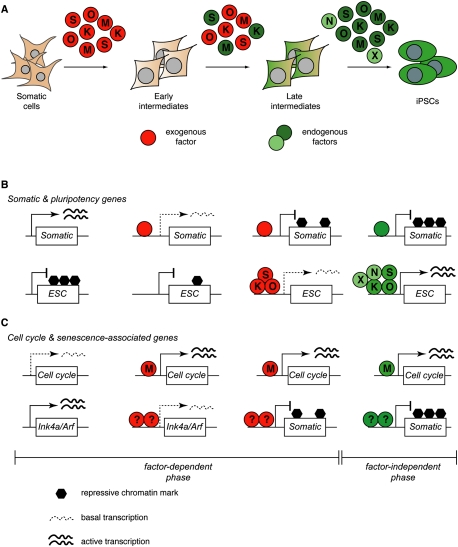Figure 2.
Putative role of reprogramming factors during iPSC formation. (A) Scheme depicting the expression of exogenous (red circles) and endogenous (dark-green circles) pluripotency factors at the protein level during different stages of reprogramming. The reprogramming process is initiated predominantly by the exogenous factors, which are gradually replaced by endogenous proteins as well as their targets, such as Nanog (N) or as-yet-unidentified factors (X) (light-green circles). The endogenous loci of some reprogramming factors (such as c-Myc, Klf4, and Sox2) are expressed in some somatic cell types, and the corresponding endogenous proteins might thus become available before activation of the Oct4 locus. (B) Scheme illustrating how the reprogramming factors may exert the rapid repression of somatic genes and the gradual activation of pluripotency (ESC) genes, two processes assumed to be mediated largely by Klf4, Sox2, and Oct4. Somatic gene silencing is associated by single-factor binding to promoter regions, while ESC gene activation involves the establishment of multiprotein complexes. The initial loss of repressive marks (such as DNA methylation and H3K27 histone trimethylation) at ESC promoters might be a passive process driven by multiple rounds of cell division. (C) Scheme showing activation of genes promoting cell division (such as cyclins) by c-Myc and repression of the Ink4a/Arf tumor suppressor locus conferring immortality by an as-yet-undefined combination of reprogramming factors.

